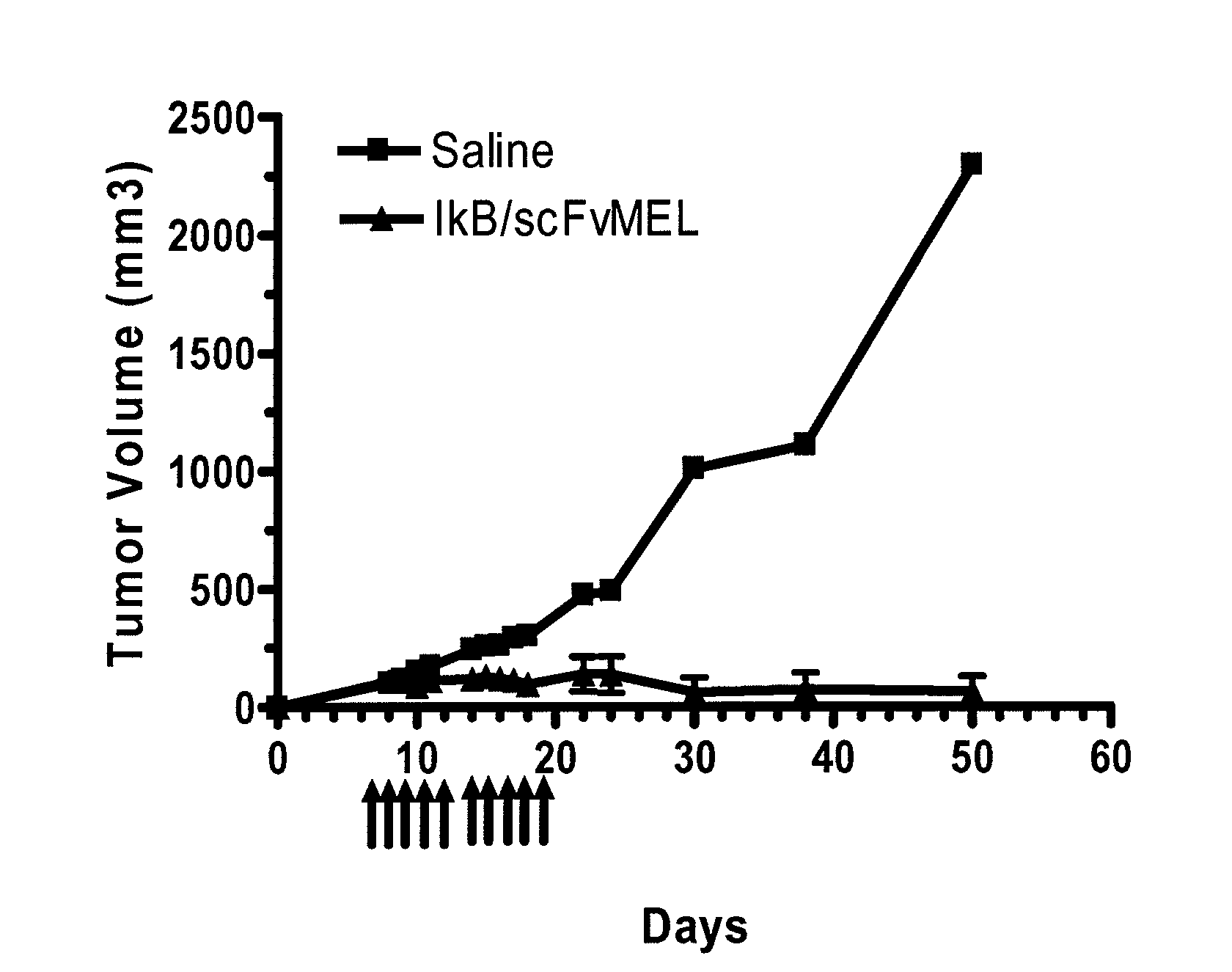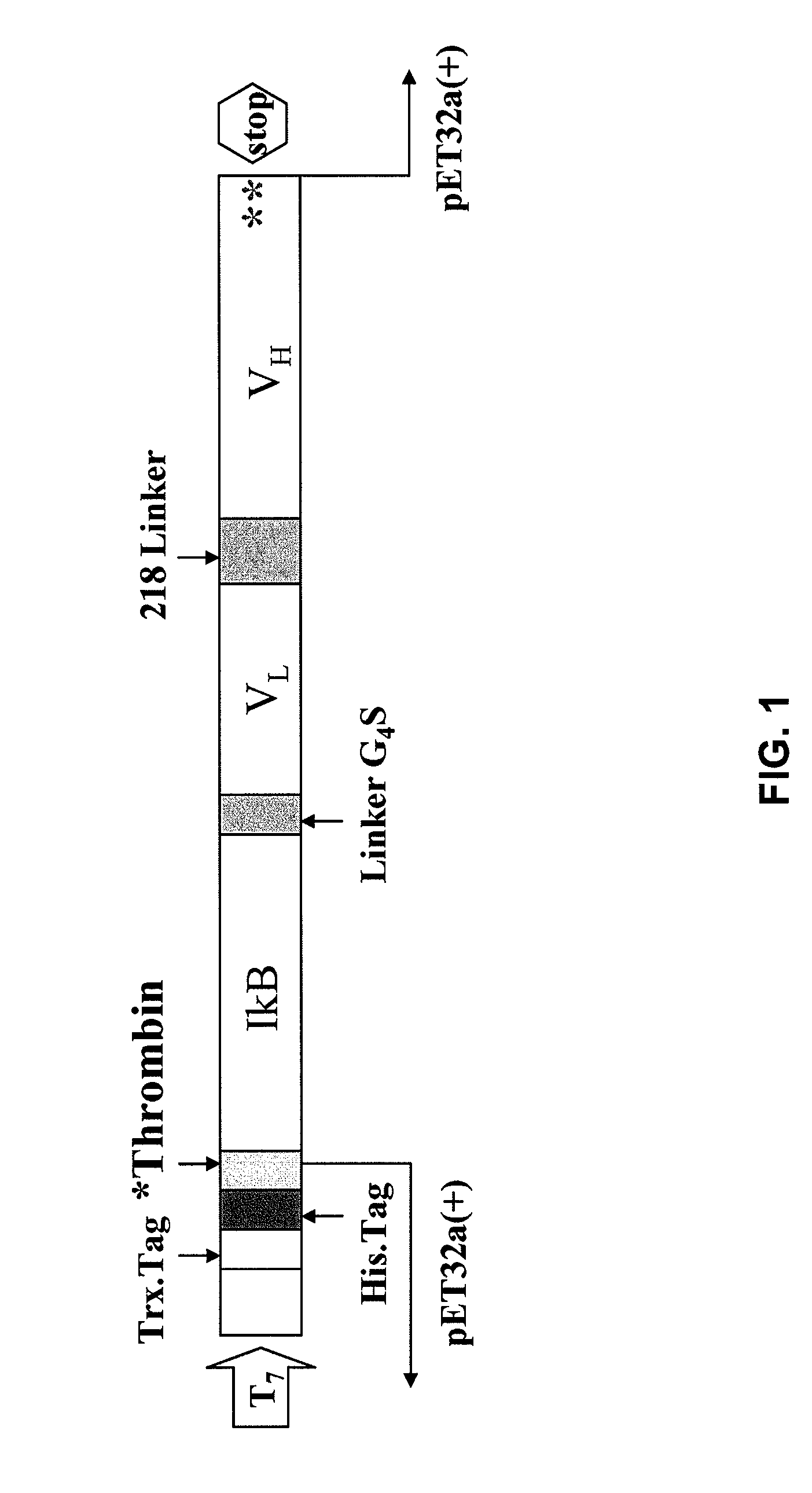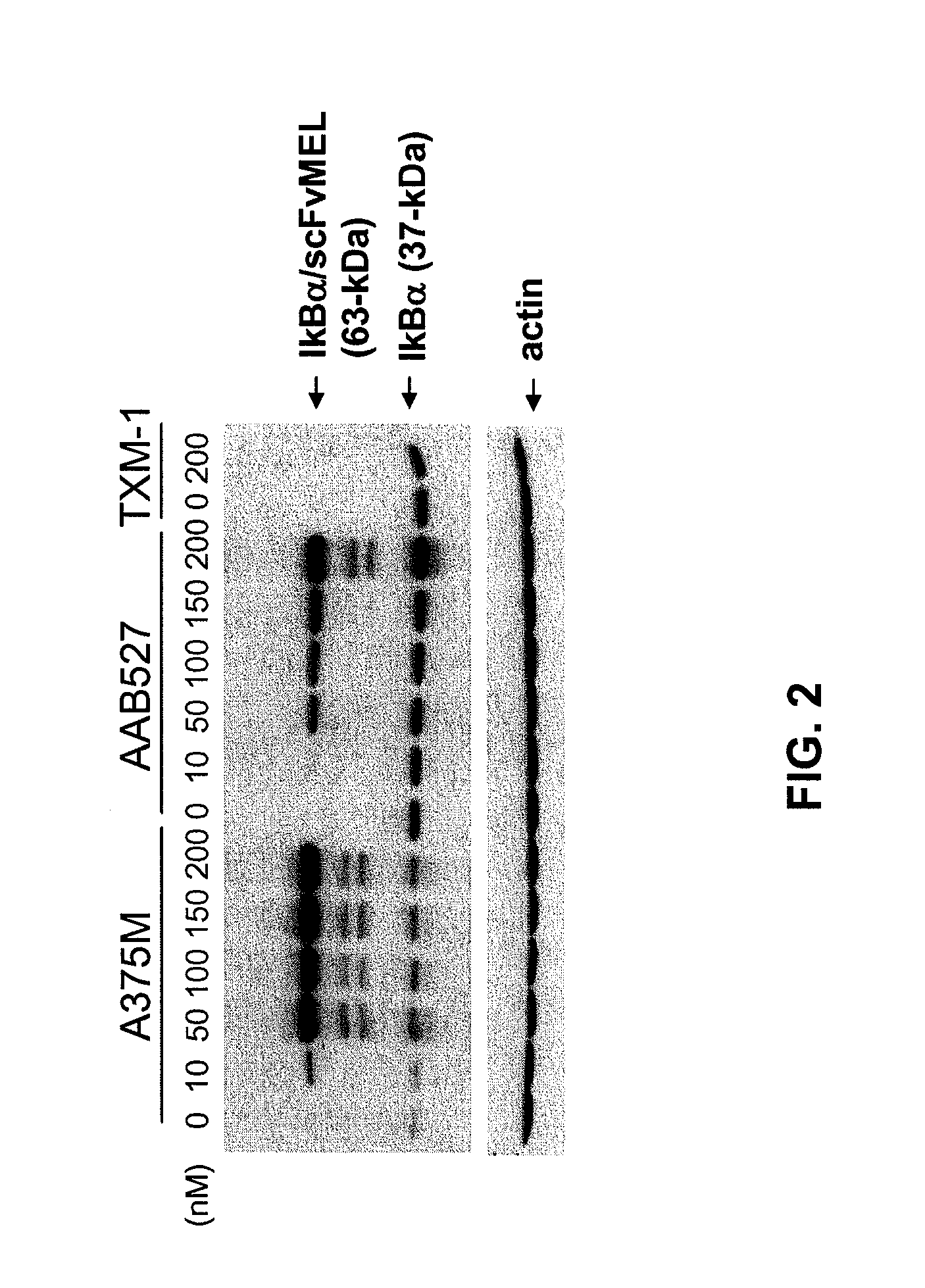Cell-Targeted IKB and Methods for the Use Thereof
- Summary
- Abstract
- Description
- Claims
- Application Information
AI Technical Summary
Benefits of technology
Problems solved by technology
Method used
Image
Examples
example 1
Construction Antibody Fusion Proteins
[0161] As an example of IkB antibody fusion proteins, a chimeric fusion protein between human IkBα and the single chain antibody scFvMEL is described. The IkBα / scFvMEL fusion protein is composed of human IkBα fused to the single-chain antimelanoma antibody scFvMEL via a short, flexible tether (G4S). For the construction of this fusion, the human IkBα gene was cloned from HL-60 cell RNA by reverse transcription polymerase chain reaction (RT-PCR) with the primers NTXIKB (5′ to 3′): CTGGTGCCACGCGGTTCTTTCCAGGCGGCCGAGCGC (SEQ ID NO:5) and CG4SIKB (5′ to 3′): GGAGCCACCGCCACCTAACGTCAGACGCTG (SEQ ID NO:6). These primers were designed to insert a thrombin cleavage site (SEQ ID NO:4) at the NH2 (amino) terminus of IkB. Construction of the fusion protein was based on an overlapping PCR method. scFvMEL gene was amplified from plasmid pET32-scFvMEL / TNF previously described by PCR using the primers NG4SMEL (5′ to 3′): GGTGGCGGTGGCTCCACGGACATTGTGATG (SEQ ID NO...
example 2
Expression and Purification of Fusion Proteins
[0163] The recombinant protein IkBα / scFvMEL was transformed into Origami (DE3) E. coli for expression. Transformed bacteria were grown in Luria broth containing 400 μg / ml carbenicillin, 15 μg / ml kanamycin, and 15 μg / ml tetracycline, at 37° C. overnight in a shaking incubator at 240 rpm. The following day cultures were diluted 1:100 in fresh Luria broth plus antibiotics (200 μg / ml ampicillin, 15 μg / ml kanamycin, and 15 μg / ml tetracycline), grown at 37° C. until the absorbance at 600 nm was 1.0, and then diluted 1:1 with fresh medium with antibiotics. At this point expression of fusion protein was induced by addition of isopropyl β-D-thiogalacto-pyranoside (IPTG) to a final concentration of 100 μM and the bacteria were incubated overnight at 23° C. These cells were harvested, resuspended in 10 mM Tris-HCl (pH 8.0) and stored frozen at −20° C. for later purification.
[0164] In order to purify the fusion proteins from bacterial cells, the c...
example 3
Internalization of IkBα / scFvMEL into gp240 Antigen Positive Human Melanoma Cells in Culture
[0165] To examine the internalization of IkBα / scFvMEL, gp240 antigen positive A375-M and AAB-527 as well as gp240 antigen negative TXM-1 cells were treated with IkBα / scFvMEL at different concentrations for 2 hours. Following administration cell surfaces were washed and stripped by glycine buffer (0.5 M NaCl, 0.1 M glycine, pH 2.5) for 5 minutes to remove excess fusion protein. Cells were lysed and proteins were analyzed by Western blot and detected by rabbit anti-IkB antibody (via the protocol detailed in Example 7). The endogenous IkBα (37-kDa) could be detected in all cells by anti-IkB antibody. In gp240 antigen positive A375-M and AAB-527 cells treated with 200 nM IkBα / scFvMEL for 2 hours, a 63-kDa protein was detected with the anti IkB antibody that was not present in these cells treated with PBS (0 nM IkBα / scFMEL). The intensity of the 63-kDa bands was reduced in AAB-527 cells treated wi...
PUM
| Property | Measurement | Unit |
|---|---|---|
| Composition | aaaaa | aaaaa |
| Nucleic acid sequence | aaaaa | aaaaa |
| Interaction | aaaaa | aaaaa |
Abstract
Description
Claims
Application Information
 Login to View More
Login to View More - R&D
- Intellectual Property
- Life Sciences
- Materials
- Tech Scout
- Unparalleled Data Quality
- Higher Quality Content
- 60% Fewer Hallucinations
Browse by: Latest US Patents, China's latest patents, Technical Efficacy Thesaurus, Application Domain, Technology Topic, Popular Technical Reports.
© 2025 PatSnap. All rights reserved.Legal|Privacy policy|Modern Slavery Act Transparency Statement|Sitemap|About US| Contact US: help@patsnap.com



